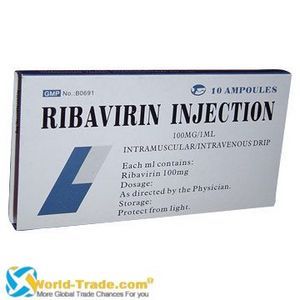Ribavirin is a nucleoside analog that was developed in the early 1970s as an antiviral agent with a broad spectrum of activities. Preliminary studies of ribavirin monotherapy in chronic hepatitis C showed a Ribavirin is a nucleoside analog that was developed in the early 1970s as an antiviral agent with a broad spectrum of activities. Preliminary studies of ribavirin monotherapy in chronic hepatitis C showed a significant decrease in serum amino-transferase activities during therapy with little direct antiviral effect. Subsequently, ribavirin was tested in combination with interferon and was found to substantially increase the rate of SVR, mostly by decreasing relapse of HCV after stopping therapy.

Although the long-term use of ribavirin monotherapy for hepatitis C has been found to be associated with significant improvement in liver histopathology, ribavirin is rarely used alone.
The mechanisms of action of ribavirin in hepatitis C are not known. Serum levels of HCV RNA decrease by a very small amount and only transiently when used alone. Ribavirin does however seem to inhibit the action of the HCV RNA dependent RNA polymerase and also induces catastrophic mutations in viral RNA.
Ribavirin has significant immunomodulatory action, causing in a shift from Th1 to Th2 profile of circulating T lymphocytes.
When ribavirin was combined with interferon in the therapy of chronic hepatitis C it was found to substantially improve SVR rates. The first large study using the combination evaluated the use of interferon a2b with ribavirin in the retreatment of patients experiencing a relapse of HCV after initial viral response to interferon monotherapy. It was found that the addition of ribavirin increased the rate of SVR approximately 10-fold compared to retreatment with interferon alone.
It was on the basis of this study that the combination of interferon and ribavirin was first Food and Drug Administration (FDA)-approved in the USA.

 RSS Feed
RSS Feed
